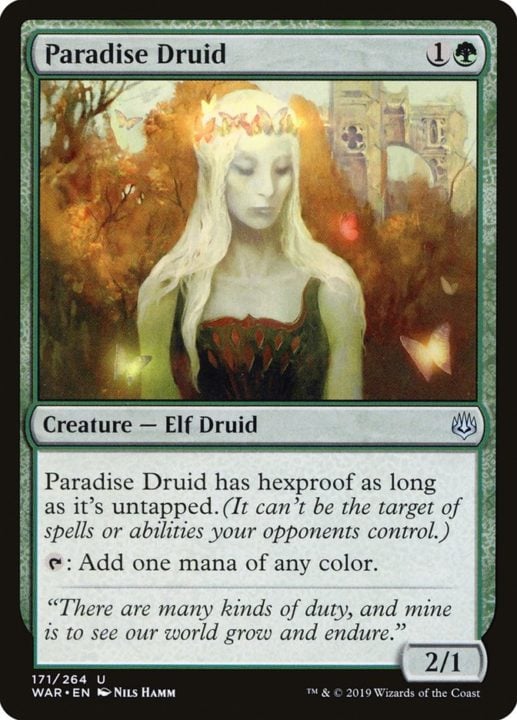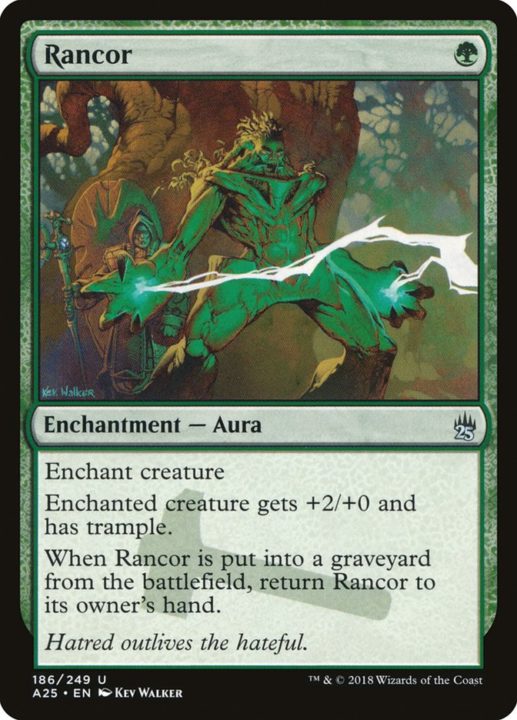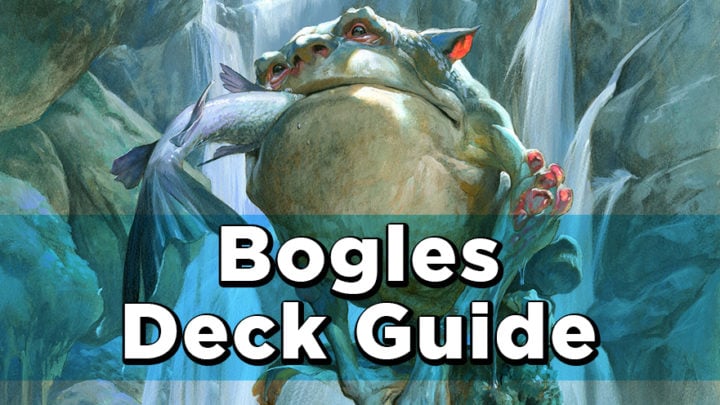Bogles are back in Standard! If you’ve played this archetype in Modern or Pauper, you’re probably either very excited, or already sideboarding against it. If you’re not sure what all the fuss is about, here are the basics of Bogles, including some fun facts and advice from noted Modern Bogles player Maria Bartholdi of Good Luck High Five.
A Slippery Subject
Bogles is a green/white (or sometimes green/white/blue) aura-based archetype. The deck’s name comes from the Eventide creature Slippery Bogle, a common one-mana 1/1 beast with hexproof. Slippery Bogle’s low casting cost and resistance to removal made it an ideal target for auras that increase its power and toughness and give it even more abilities, making it an unstoppable attacker all on its own.

In most decks, Slippery Bogle is backed up by a few other cheap hexproof creatures. Bartholdi’s favorite to use in Modern is Silhana Ledgewalker, which is hard to block, in addition to having hexproof. Modern decks may also include Dryad Arbor as a creature that can be found using fetch lands in response to an opponent’s sacrifice effects. In Standard, the closest replacement for Slippery Bogle is currently Paradise Druid.

Aside from the Bogles themselves, the most important part of a Bogles deck is the auras you enchant the bogle with. In Standard, auras that grant vigilance are a priority, since Paradise Druid only has hexproof when it’s untapped. Beyond that, though, Bartholdi recommends including the cheapest possible auras to keep the deck moving quickly. Sentinel’s Eyes is one of the best spells for this in Standard: not only does it give +1/+1 and vigilance for one mana, but it can also escape if it needs to be reused. In Modern, Gryff’s Boon plays a similar role to Sentinel’s Eyes, since it can also be recurred from the graveyard. Curious Obsession is another good card to include in decks that splash blue, since it can give Bogles players much-needed card advantage.
Bogle Beware
Bogles is an aggressive deck with a straightforward game plan, but that doesn’t mean it’s always easy to play. Bartholdi warns new Bogles players that they need to be aware of the metagame. While Bogles plays well against creature-heavy decks, its game plan can easily be disrupted by counter magic and has trouble dealing with combo decks. “You’ve gotta be a bit psychic about what your opponent wants to cast and when,” Bartholdi says – whether that means counterspells and removal for your creatures, or threats you need to cast your own removal on, or even how many times to mulligan to make sure your opening hand is resilient to Thoughtseize. It can take a lot of thought to play Bogles.

That said, Bartholdi enthusiastically recommends the archetype: “It’s FUN. It’s silly. It can smash face. It’s emblematic of all the reasons I play Magic. What’s more awesome than putting a fancy crown on a weird, creepy swamp baby? Nothing, that’s what.”
That really does sound fun. If you’d like to do some face-smashing of your own, check out these Bogles decks.
Bogles in Different Formats
Standard

This decklist features Paradise Druid as the bogle. The supporting cast includes Destiny Spinner for counterspell protection, Starfield Mystic to make auras cheaper to cast, and Setessan Champion for card advantage. The auras include Sentinel’s Eyes and Angelic Gift to add to Paradise Druid’s evasive abilities, as well as enchantment removal like Prison Realm and Kenrith’s Transformation. The deck also runs Calix, Destiny’s Hand to make enchantments easier to find; other decks might run Siona, Captain of the Pyleas instead, or splash blue for Staggering Insight.
Modern

This deck by Campbell Glass is a great example of a classic Bogles list. It runs Gladecover Scout as a backup for Slippery Bogles, as well as Kor Spiritdancer, which gets bigger for every aura attached to it. All the auras in the main deck cost only one or two mana to keep the deck running as quickly as possible. The deck gives its bogles extra protection by including Hyena Umbra and Spider Umbra, which can take the hit if the creature they’re attached to would otherwise die.
Pauper

This MtGGoldfish sample deck uses Gladecover Scout and Silhana Ledgewalker as backup bogles, and includes a copy of Heliod’s Pilgrim to make finding your auras easier. It includes recurrable auras like Rancor, as well as Favor of the Overbeing, which takes advantage of Slippery Bogle being both blue and green to add extra abilities. One interesting thing this deck does, is leave itself room to splash any color outside of its base green and white, with protective instants in any colors in the sideboard and color-fixing auras like Utopia Sprawl and Nylea’s Presence in the main deck.
Legacy

This deck by April King is Bartholdi’s favorite Legacy deck. It includes more blue than most Bogles decks, running Invisible Stalker and Unstable Mutation as well as blue disruption like Force of Will alongside powerful white auras like Daybreak Coronet. Bartholdi recommends this list to anyone interested in trying out Legacy.
Let us know what your favorite bogle is and what auras you’re suiting it up with!

Alex is an Azorius bureaucrat who dreams of joining the Selesnya Conclave. Their favorite color of mana is green, and they love brewing for Commander variants.

